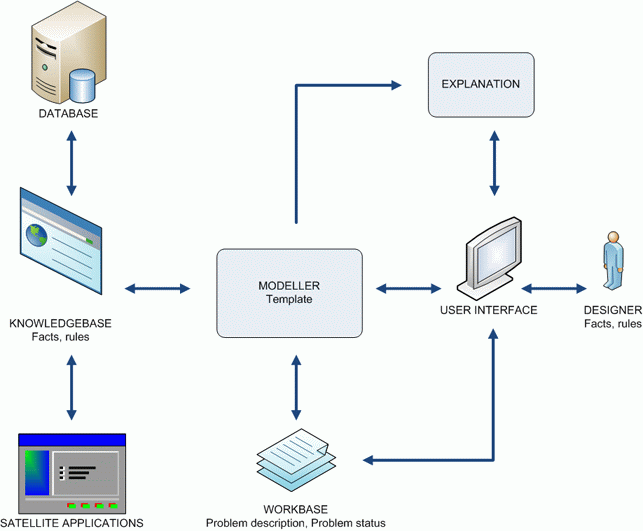Page History
The classic knowledge based applications are mainly focussed on getting the most out of existing knowledge and individual software programs. It is closest to the fundaments of Quaestorin which the Knowledge Engineer fills the knowledge base with a lot of "nuts & bolts" (ofcourse with smart constraints etc.) and the user builds a model on the basis of these "nuts & bolts" by using the modeler of Quaestor. Through input, choices and sometimes rejection of relations, together with the reasoning mechanism of Quaestor, the user comes to a solution which contains both end results and the model with intermediate results it is based on.
Quaestor network of parameters, relations and contraints
For a Domain Expert who is totally familiar with his/her field of expertise and has sufficient understanding of Quaestor, it is the most flexible and powerful way for using all the existing knowledge in a knowledge base. For End Users, macro's can be created (previous created solutions, which are then indicated as macro) avoiding complex reasoning processes and providing a reusable model which you can start with alternative input. Within this model, Quaestor will still check the validity of the model (through its constraints, etc.) and, where possible, will change the model accordingly.
Quaestor schematic architecture
...

